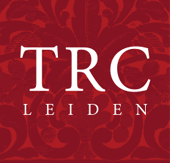Furnishing velvets are used around a building, either in public or private circumstances. These textiles can be divided into two basic forms, soft-furnishings, such as curtains and cushions, piano and table covers, tray covers, etc., and upholstery textiles, such as those used for chairs and sofas. In particular the bedroom and beds were regarded as important places for displaying velvet and the owner’s status.
 Advertisement for velvet curtains made by Lister & Co. of Bradford, England (1961; TRC 2018.2688
Advertisement for velvet curtains made by Lister & Co. of Bradford, England (1961; TRC 2018.2688
Between the 16th and 19th centuries in northwestern Europe, for example, a very elaborate system of bed dressing (a tester or half-tester) was developed among the elite in order to display their status. Sets of cloth for this purpose were known as bed hangings and could include:
(a) Canopy: a sort of cloth roof for the bed, which stretched above the bed and was kept in place with four poles, one in each corner. A half-tester canopy only went half way above the bed; (b) Valance: the sides of the canopy and the upper part of the curtains were covered with a valance or high valance; (c) Headcloth: this is the cloth that went behind the headboard of the bed; (d) Curtains: there could be between two and six curtains around a full-tester bed. They covered the long sides and end of the bed. Sometimes the curtains were in pairs, on other occasions single curtains were used; (e) Lower valance: the mattress and sides of the bed were covered with a length of cloth known as a valance, lower valance, or skirt, and finally (d) Counterpane: on top of the bed itself and covering the sheets, blankets, etc, was a counterpane or decorative cloth that often matched the other elements of the bed hangings.
Royal canopies
Royal court use of furnishing velvets included the canopy over a monarch’s throne. In Britain this is called the ‘Cloth of State’, which consists of a canopy called a ceeler and a long back cloth known as a tester, which goes against the wall. The set is hanging above and behind the monarch's throne. Much of it is made of velvet, which is at some places decorated with woven designs and at other places with embroidery.
ECCLESIASTICAL USE
The use of velvet, especially within the Roman Catholic Church and some of the Orthodox churches, also reaches to liturgical vestments, such as copes, chasubles and slippers worn by bishops and those higher within the hierarchy, as well as for church furnishings, such as altar coverings (notably altar frontals and superfrontals), banners and canopies. Velvet is also used for funeral purposes, such as palls placed over coffins, especially those on display in a public procession.

